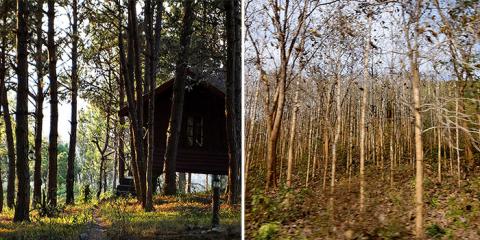Forests elsewhere
March 06, 2013
My wife and I recently returned from a vacation in Southeast Asia. Along with friends, we spent two weeks traveling in the backcountry of Laos; we found it interesting to see the rivers, mountains and forests of that country. Laos is landlocked, and one border is arrayed along the Mekong River, which during the winter months looks about the size of the Columbia. We were told its water volume swells by several times during the rainy season.
The Mekong is everything to the people who live on its banks – not the least factor of which is that it contributes to the vast irrigated farmland where 80 percent of Laotians live. In the lowlands you also see mile after mile of brush fields, where tropical forests once were and where rice and other crops will not grow. Remnants of these tropical forests are protected in preserves, although the temptation to remove valuable trees must be great, because our guide pointed out places where some had been stolen.
Much of the land is in small private ownership of an acre or two. Quite often you see small plantations of teak trees planted neatly in straight rows, managed for wood production. Our guide said that in 25 to 30 years these trees can be harvested – that they represent what one generation of landowner could do to help the next, which is a concept familiar to many Oregon forest landowning families. Some logs may be sold, but just as likely, he said, they will be used to build a home, because this durable wood is favored for construction in this tropical climate.
But the Mekong and its tropical lowlands aren’t the only features of Laos. The uplands and higher mountains have distinct cultures and forests. As we traveled to a high plateau area, we abruptly began to see pine trees intermingled in areas growing bananas and pineapples. Eventually, as we climbed higher the landscape opened up, and it was quite different from the lowlands. It was noticeably cooler, although people still farm rice there. We stayed at a small lodge located in a pure pine forest, and we felt at home walking trails through the pine-needle duff. The old lodge buildings were built from knotty pine, with foundations of stone. Fireplaces burned familiar-smelling wood. Some of the forest shrubs had red foliage. They turned out to be poinsettia, which, while probably not native, grow into very large shrubs, contrasting the green forest with bright red understory.
For my wife and me, Laos will no longer just be a spot on the map now that we’ve visited the country and seen its forests. Lush and tropical along the river – but not very far away, drier with open pine forests. We didn’t know you could see it all within one day, and it was quite an eye-opener.
Dave Kvamme
Director of Communications
